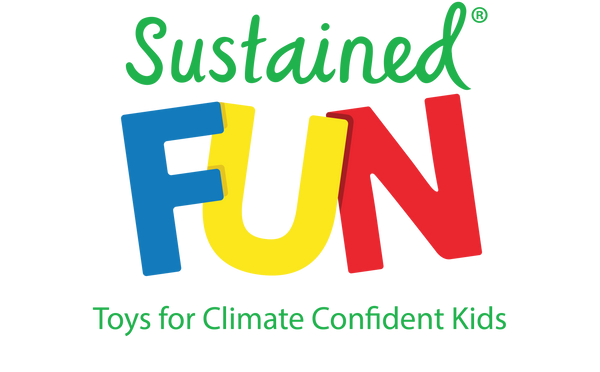EcoSplat Reusable Water Balloons are designed to replace single-use water balloons which break into pieces and litter our gardens and parks. Each year over 3.2 billion pieces of rubbish are created by single-use water balloons and packaging.
In creating a reusable alternative to one of the most popular toys we were faced with the challenge of producing a product that works as well, or better, than regular water balloons. It had to absorb lots of water and release it in a big splat. It was also important that the balloons didn’t hurt when they landed. For practical reasons the materials also had to be readily available and affordable.

Ideally we would want a material that was reusable and then biodegradable at the end of its life, but cotton and wool didn’t work: they didn’t absorb much water or release it quickly. Another major problem with cotton and wool is because they are much slower to dry they are more likely to go mouldy. And of course we don’t want reusable products to biodegrade while they are still in use.
The material that worked the best was polyester. Polyester absorbs a lot of water and releases it quickly so the splats are even better than regular water balloons (and you get 6 splats before you need to re-dunk!) It dries quickly and doesn’t go mouldy. The material is soft and the balloons don’t hurt when they land.
In a circular economy we are aiming to keep resources and materials in use for as long as possible. Single-use products in a linear economy create bigger problems than reusable items made from non-biodegradable materials.

Reusable water balloons contribute to a circular economy because they can be used over and over again.
EcoSplat reusable water balloons replace countless single-use water balloons (over 3000 per balloon!) Reusable water balloons also reduce deforestation caused by rubber plantations, the chemicals used in the rubber production and the energy used to make, transport and dispose of, or attempt to recycle, single-use water balloons.
What about Recycling?
While recycling keeps resources in use for longer, most materials are ‘downcycled’ and degraded through the process. This means that once materials have been through the system once, they are generally not accepted by recycling facilities again - essentially those resources get one extra loop before going to landfill.
The current global recycling system is volatile. It is hard to be sure that products we put out for recycling are actually getting recycled. Most of NZ’s recycling happens offshore so extra energy is needed to ship the products to a recycling plant - often located in the developing world where they are less likely to have adequate facilities to recycle efficiently and safely.
We need to keep taking continual steps towards a circular economy, and we’ve been working hard to keep negative environmental impacts as low as possible. Here are some of the steps we’ve taken:
- All of our packaging is plastic-free and made from sustainable sources
- Packaging is designed to be constructed without glue
- All orders are shipped plastic-free
- We encourage people to wash the balloons in micro-fibre catching bags
- We’re investigating sources of recycled polyester
- We take back the balloons at the end of their life for future recycling
If you'd like more information on our sustainability, you can check out our blog on EcoSplat and the UN Sustainable Development Goals, our Sustainable and Ethical Procurement Policy and our Code of Ethics.

